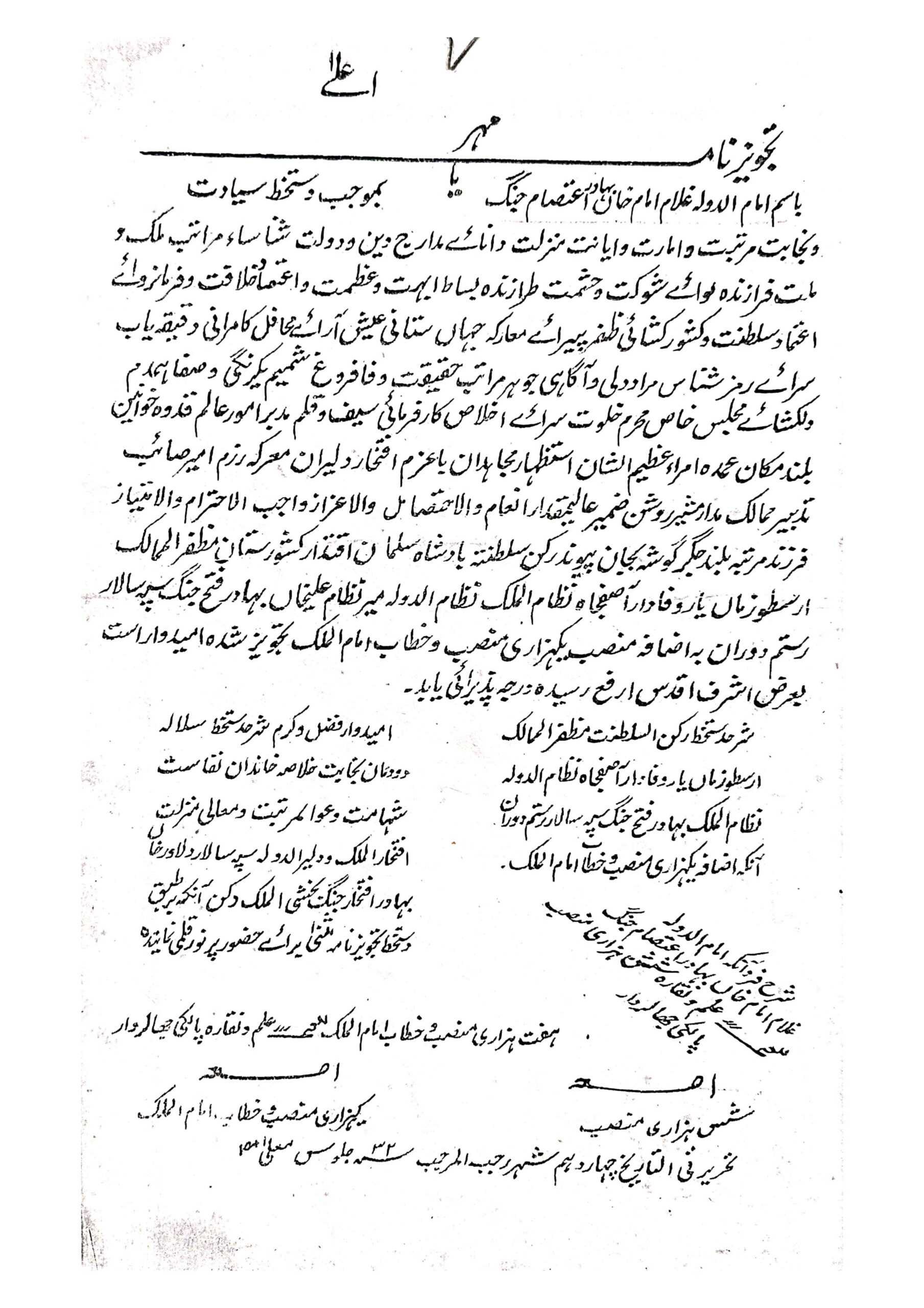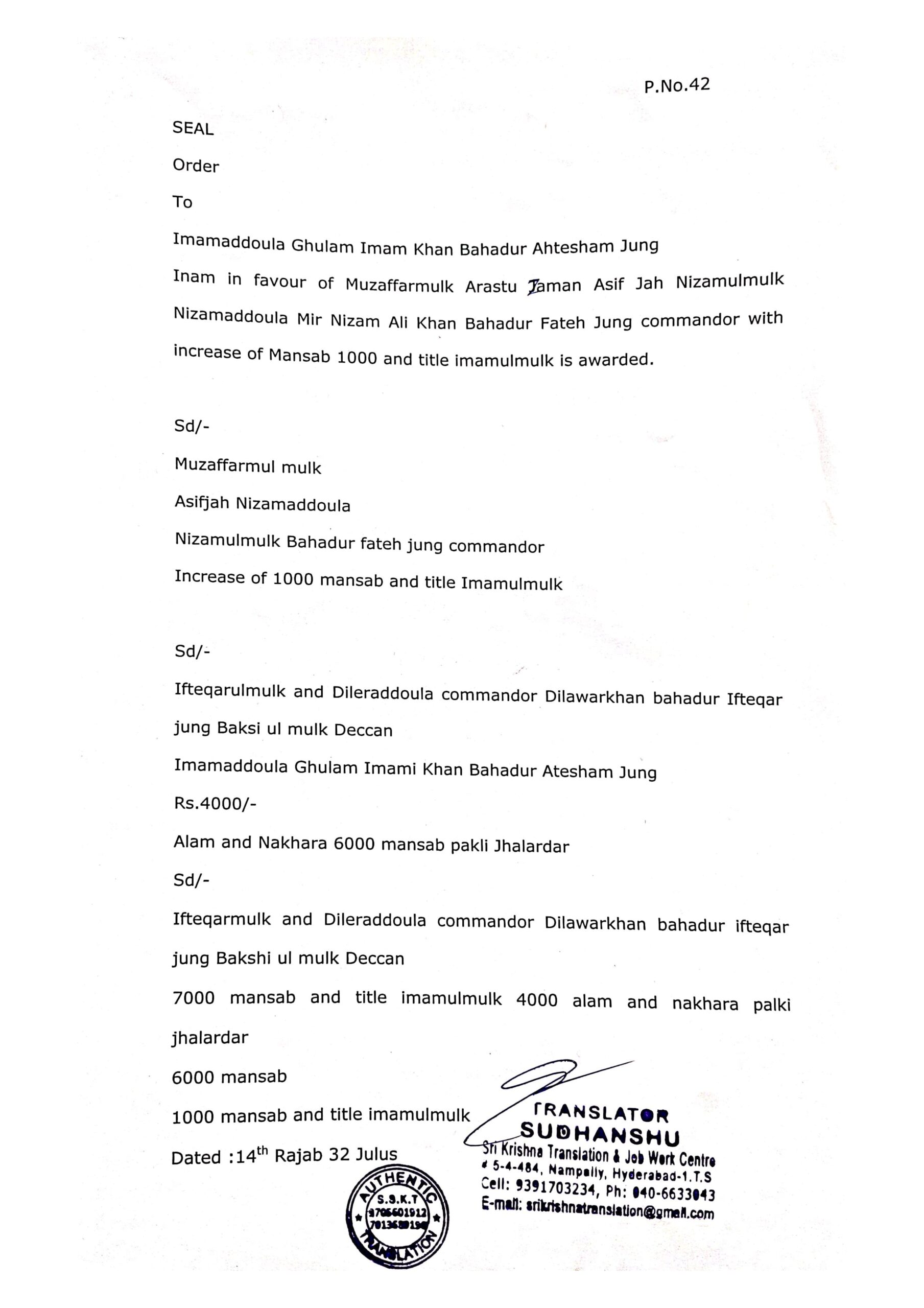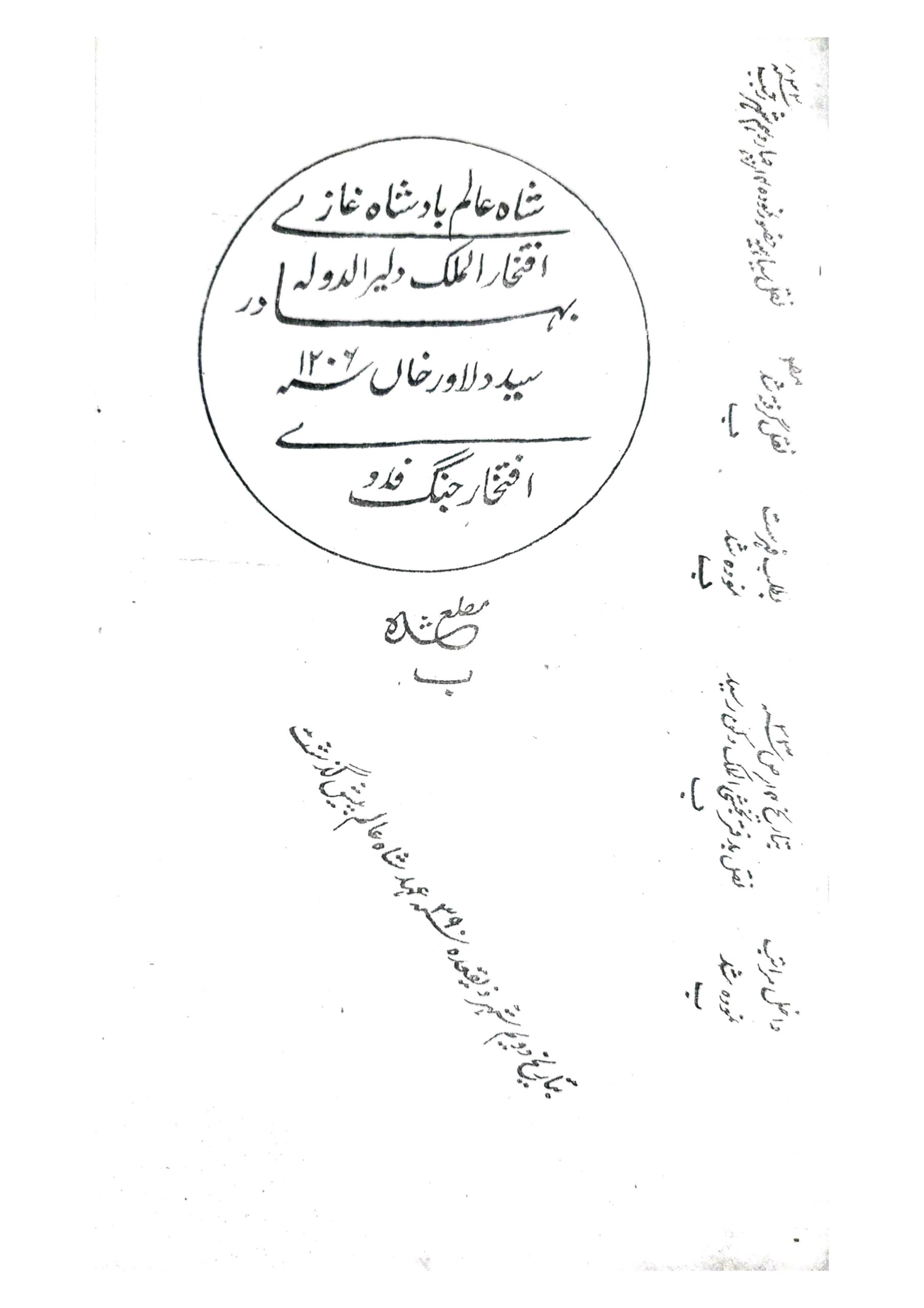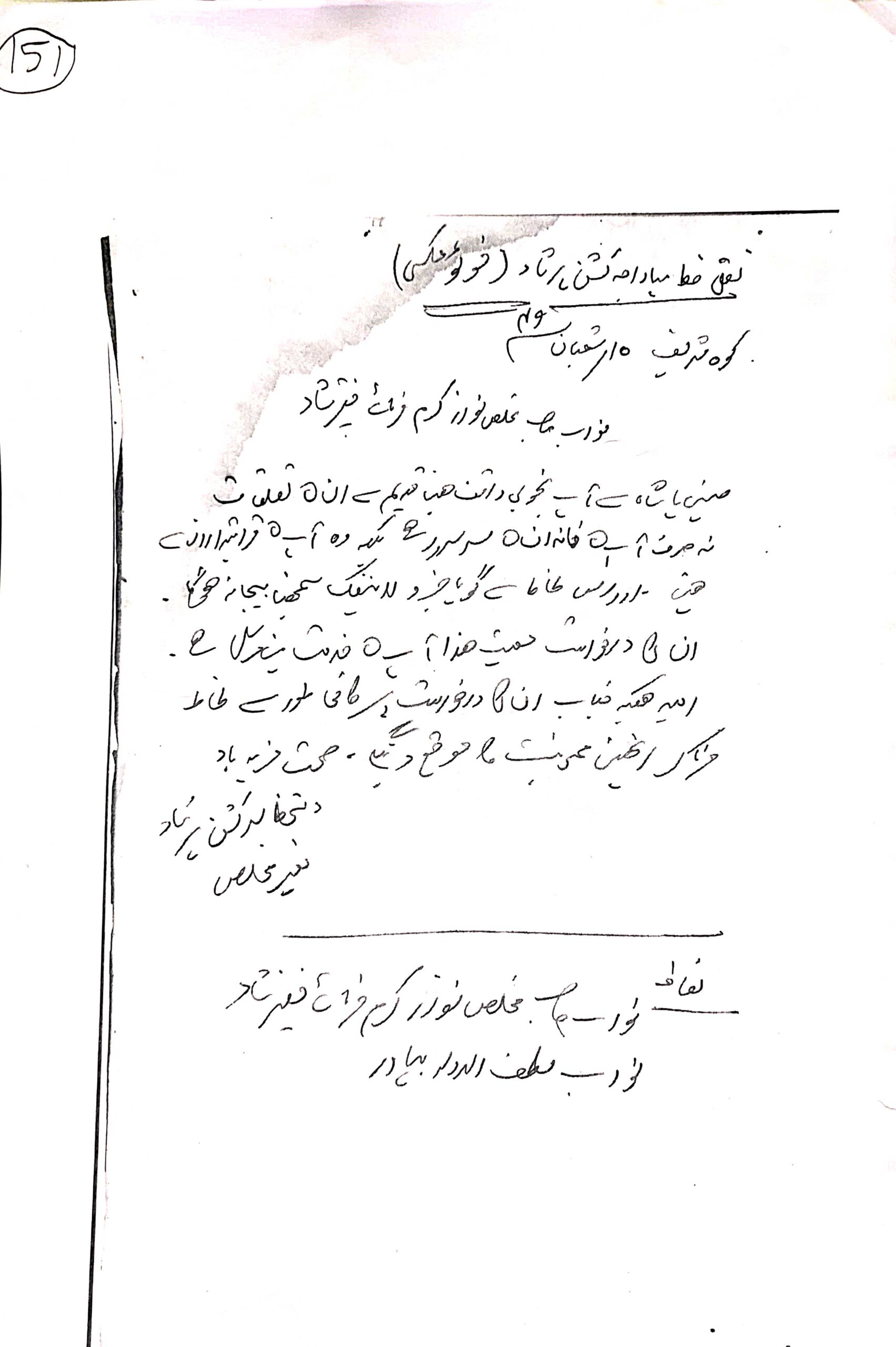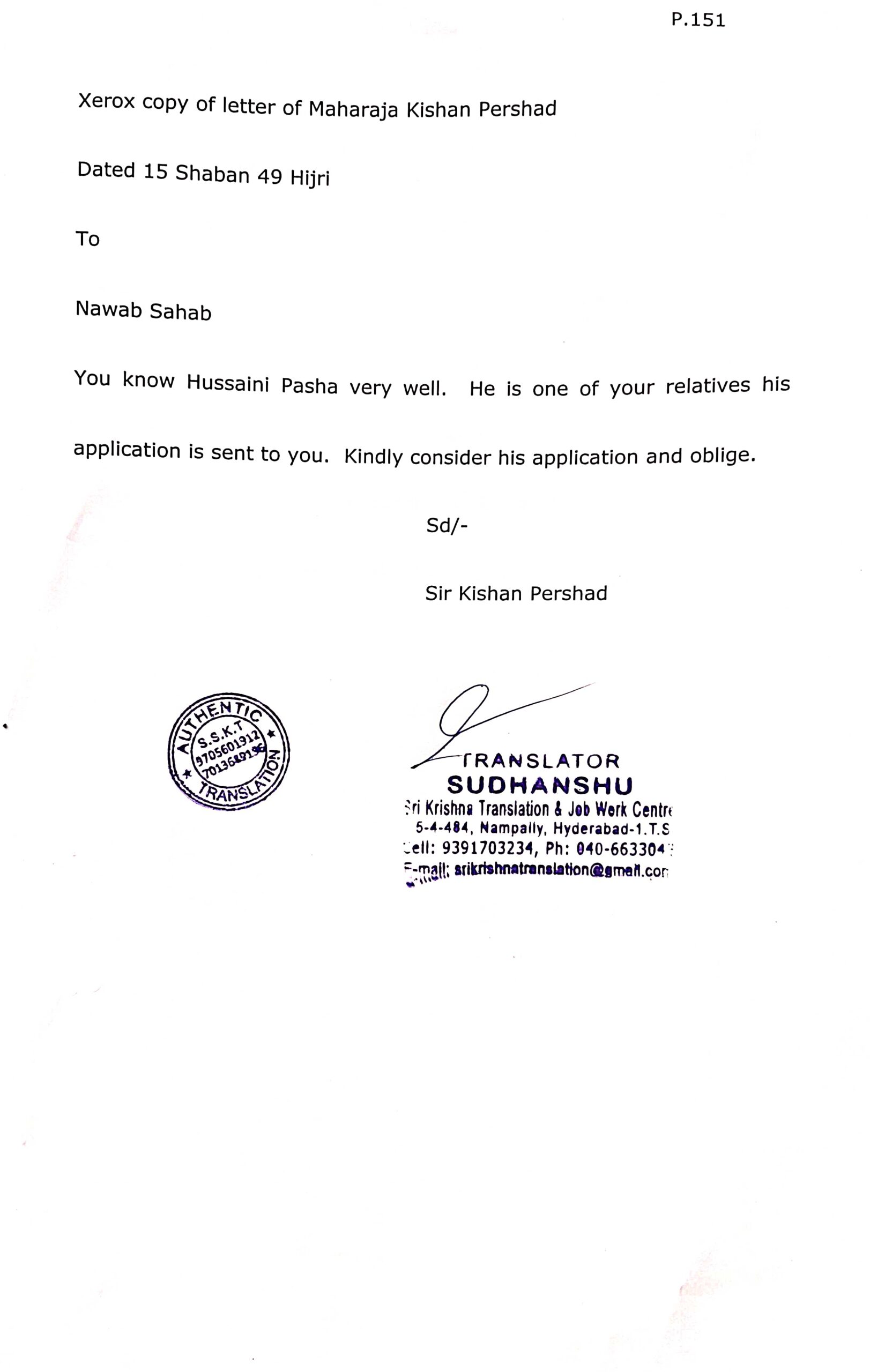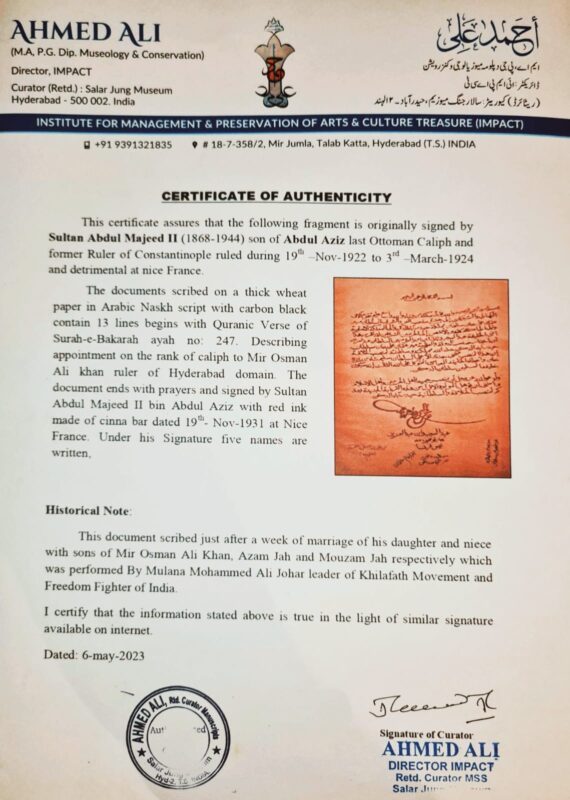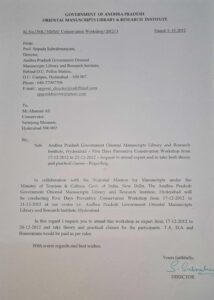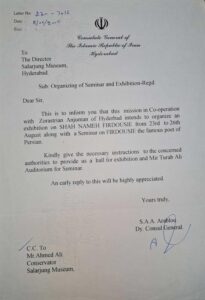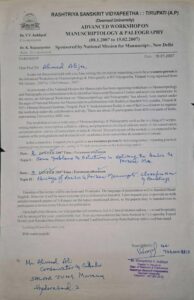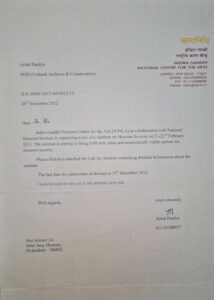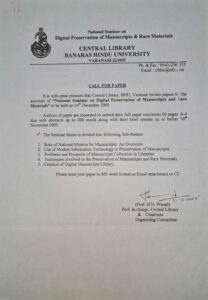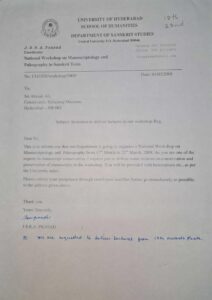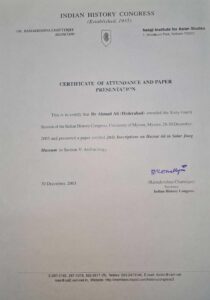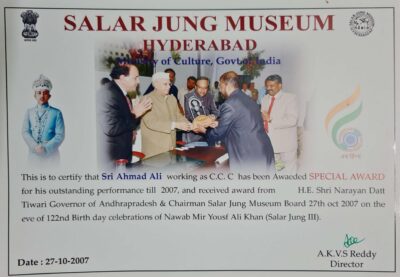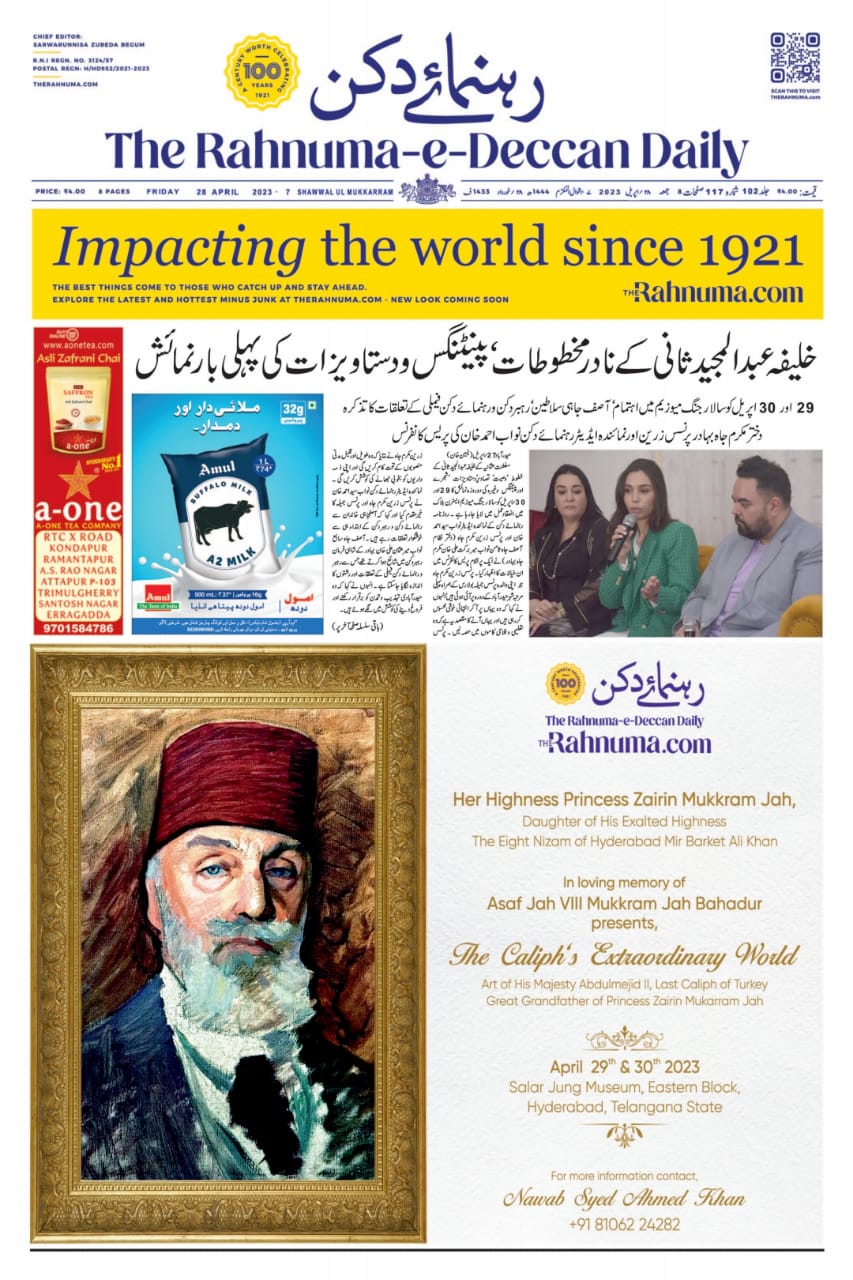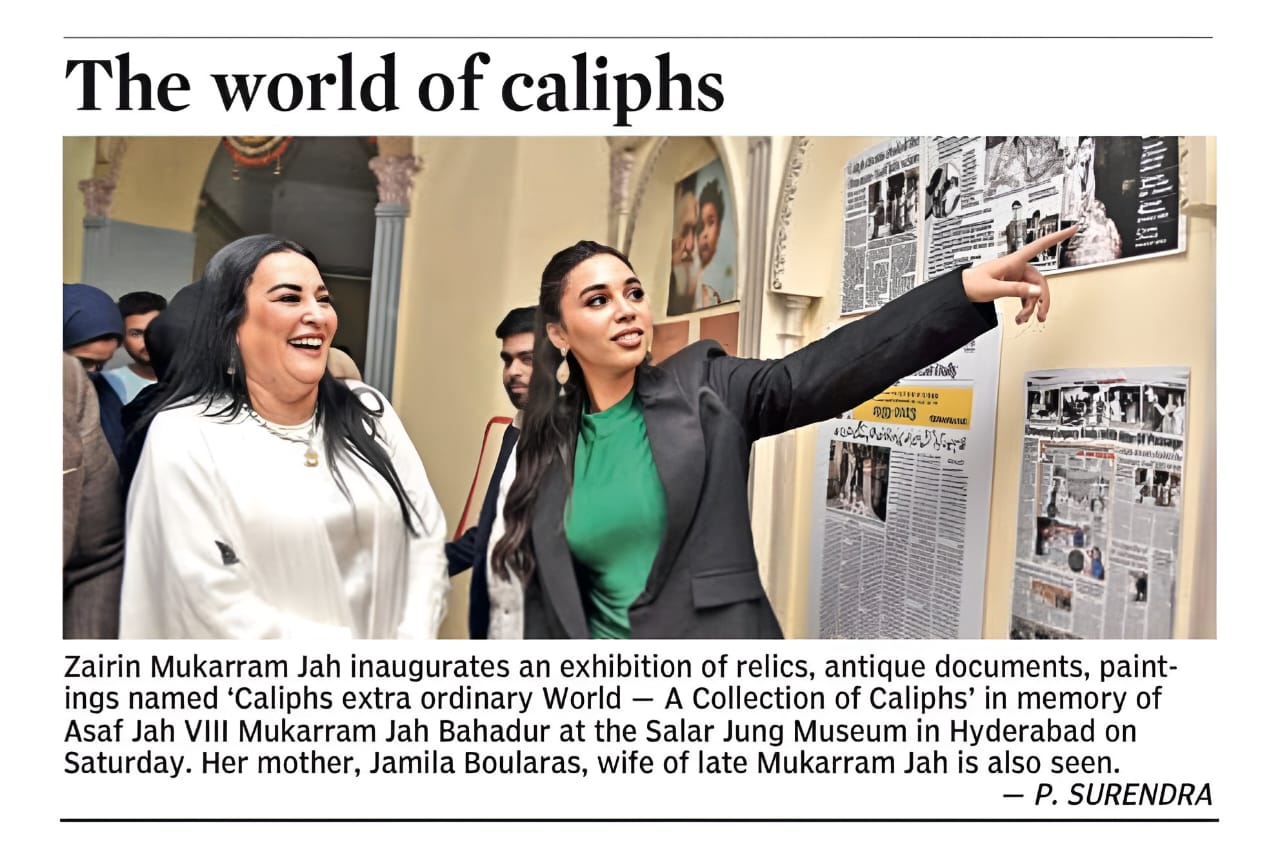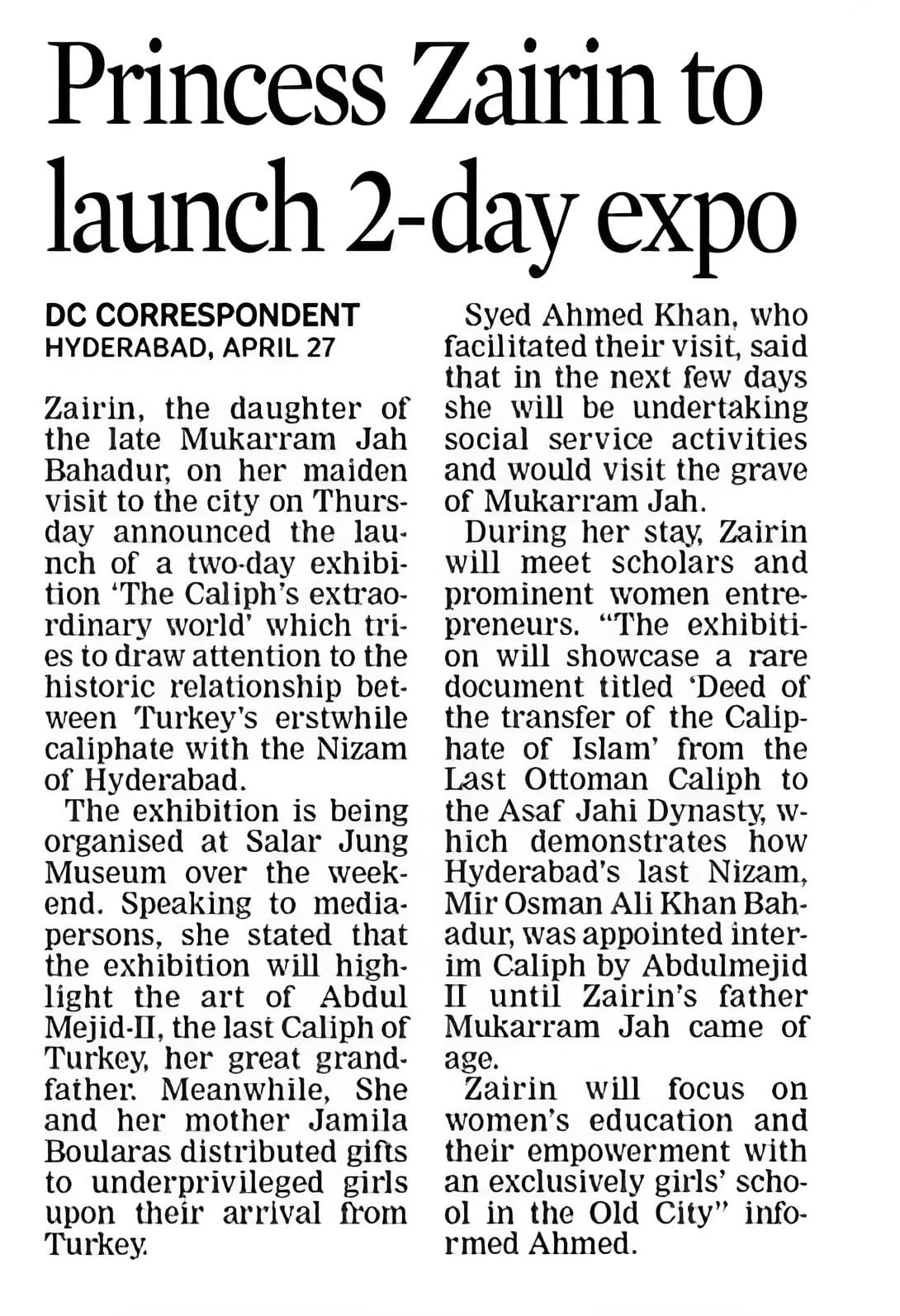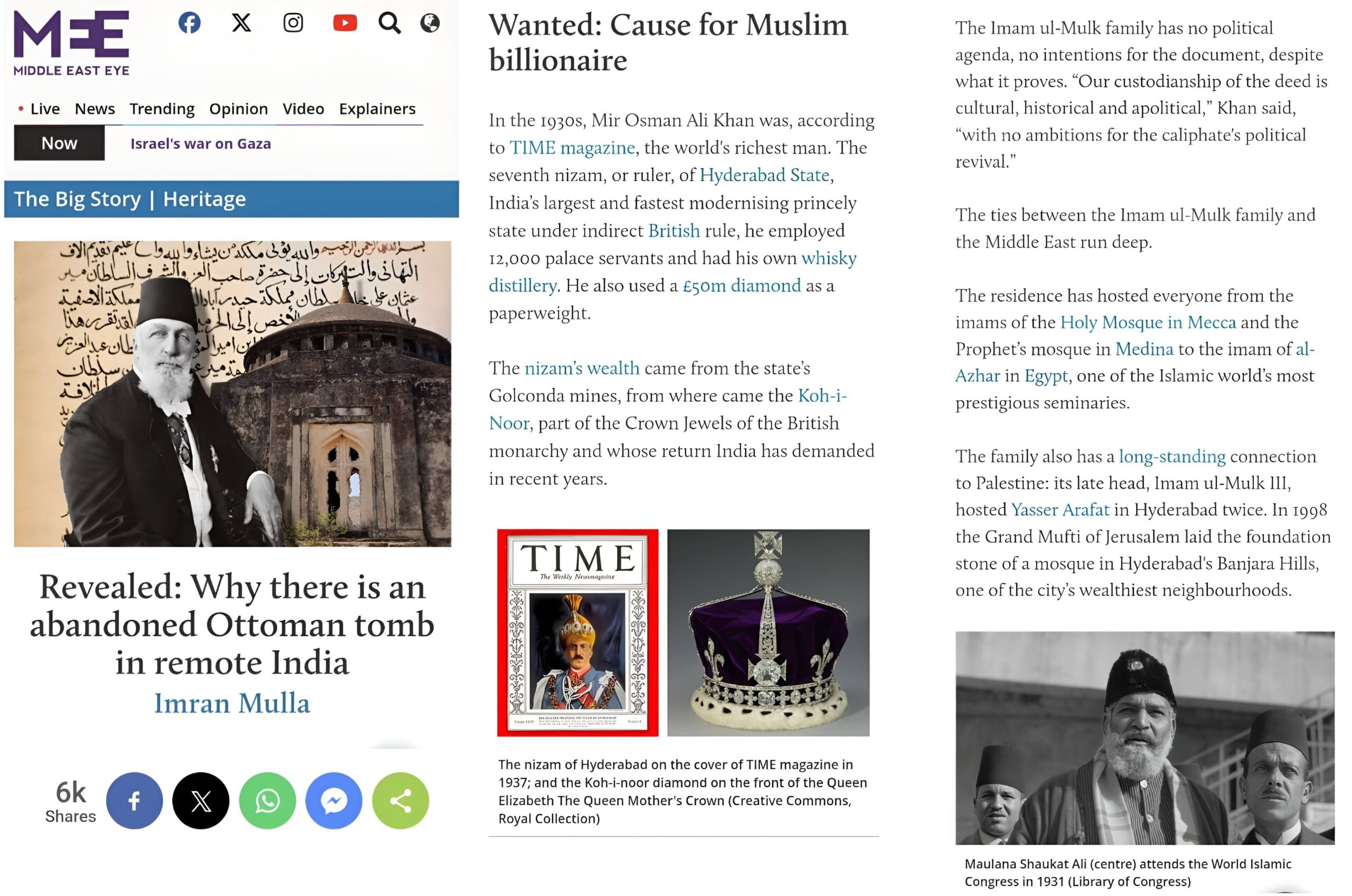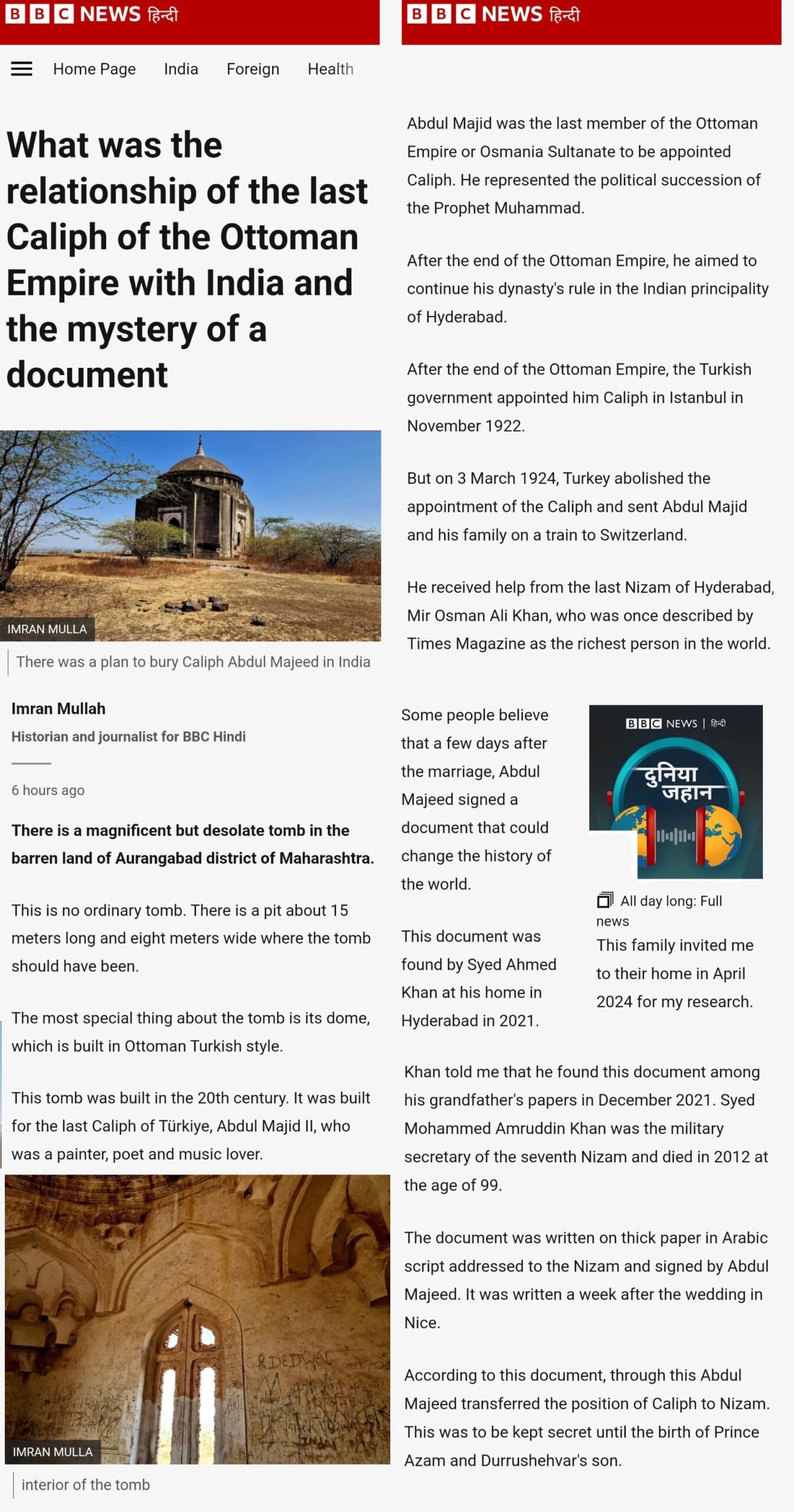
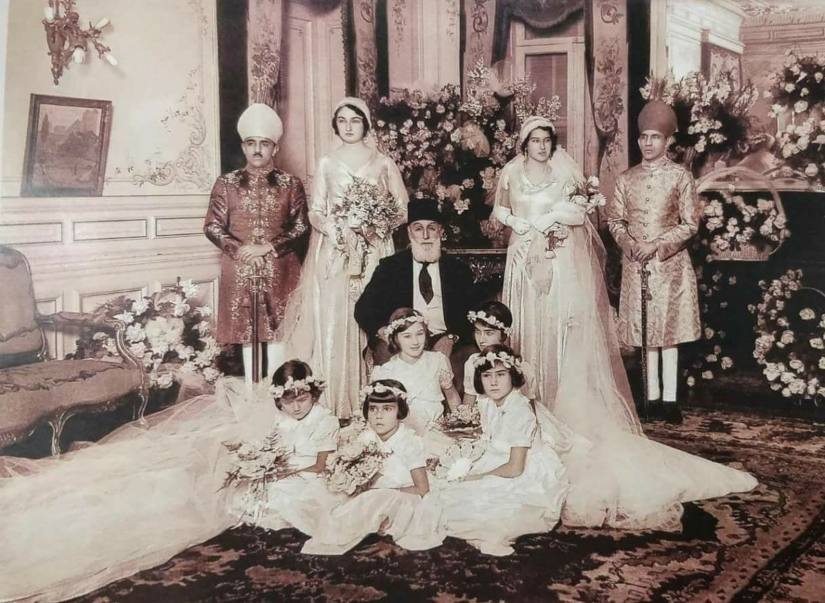
Turkey’s Last Caliph – His Majesty Abdulmejid II at the wedding of his daughter Her Highness Princess Durru Shevar Sultan to the eldest son of His Exalted Highness Asaf Jah VII, The Nizam of Hyderabad – General His Highness Azam Jah, Nawab Sir Mir Himayat Ali Khan Siddiqi Bahadur Bayaffendi – parents of late Prince Mukarram Jah, while in exile at Nice, France.
Welcome!
You have come to the crown of the caliphate, a great blessing.
You have arrived at the pinnacle of fortune and prosperity, welcome!
Victory and success have accompanied you, welcome!
As the standard-bearer of prophethood, you have arrived, welcome!
The gates of the caliphate have opened again, welcome!
You have come as the solution to governance, welcome!
O light of brotherhood, you have come, welcome!
With grandeur and splendor, you have awakened the dormant world,
You have illuminated the kingdom and nation, welcome!
For the garden of aspirations, you have come as a flourishing flower, welcome!
With your arrival in Deccan, the spirit of illumination has returned,
A legacy has revived, pouring blessings upon it,
A grand sip from the timeless chalice of Usman Khan.*
The poor are now comforted,
The destitute and helpless find refuge,
Even strangers are guided to a noble path.
In this realm, a voice has risen—
The pride of Hindustan, The glory of Islam
Indeed, you are the manifestation of a divine blessing in Deccan,
*The fulfillment of the caliphal aspirations linked to Ottoman Usman Khan I
— Rahbar-E-Deccan 1931. Wali Ahad Number.
Crown Prince Special Edition.
Al Sharif Ahmed Mohiuddin, Al Sharif Yusufuddin.
68 pages. Pg. 40. Rahbar-E-Deccan Press,
Afzal Ganj, Hyderabad
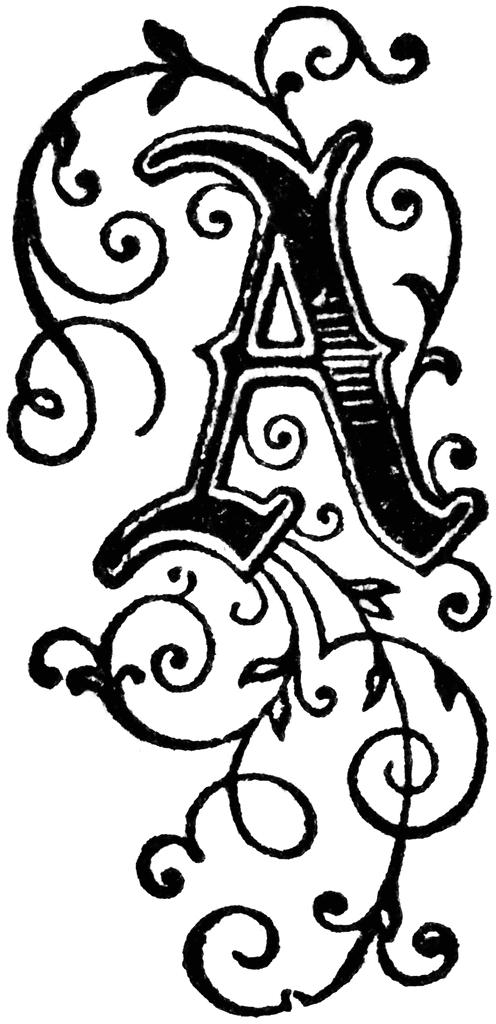
fter Hyderabad merged with the Indian Union, the Caliphal Crown from His Majesty Abdulmejid II – upon his death in France – to His Exalted Highness Mir Osman Ali Khan VII Nizam of Hyderabad for his heir Prince Mukarram Jah, finally arrived in Hyderabad and remained here since.
Following the Nizam’s death in 1967, his grandson and successor Prince Mukarram Jah Bahadur proclaimed himself VIII Nizam of Hyderabad, but for reasons unknown, did not claim the Caliphal Crown of his maternal grandfather.
To ensure the continuity of the Caliphal Crown – legally distinct from the abolished political institution of the Caliphate – His Majesty Caliph Abdulmejid II arranged for the marriage of his daughter, Her Imperial Highness Princess Durru Shehvar Sultan, to General His Highness Azam Jah Nawab Sir Mir Himayat Ali Khan Bahadur, the eldest son of the Nizam of Hyderabad.
In November 1931, TIME Magazine reported on the “secret engagement” between the Caliph’s daughter and the Nizam’s heir, which many Muslims perceived as a favorable union. The possibility of their marriage and the birth of a male descendant raised hopes of combining temporal and spiritual authority in a figure who could be proclaimed as “The True Caliph.”
According to The New York Times, His Majesty Caliph Abdulmejid II, appointed his schoolboy grandson, Mukarram Jah, through his will as the inheritor of his claim to the caliphal crown. Though he never asserted a hereditary claim to the grand title of caliph, the young Mukarram inherited the duty to maintain it, which he refused.
His Exalted Highness Asaf Jah VIII Mukarram Jah Bahadur was coronated as VIII Nizam of Hyderabad in 1967, and took the oath upon the Uthman Codex Kufic Quran of the third Imperial Rashidun Caliph while holding the sword of his maternal grandfather His Majesty Caliph Abdulmejid II, but never claimed the grand title of Caliph.
Imam ul-Mulk IV Custodianship of the Caliphal Crown

Fragments from Imam ul-Mulk IV’s centuries old paternal family tree displayed by the Office of the Naqib al-Ashraf of Samarqand and Bukhara from original scans, tracing his paternal lineage back to Imam Muhammad al-Taqi, eldest son of Imam Ali ibn Musa ar-Rida, Crown Prince of the Abbasid Empire.
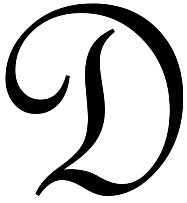 istinct from the Sunni-Shia religious polemics on legal succession to the Prophet based on theology, the Imam ul-Mulk family recognizes Fatima Al-Zahra, a female, as the legal heir of her father, and subsequently his legal successor based on the laws of inheritance recognized in the Kitab Allah. Hence, Fatima Al-Zahra is recognized as the true Caliph, and her husband Mawla Imam Ali ibn Abi Talib and their biological children from Al Hasan and Al Husayn, primarily in the line of the Twelve Shia Imams, and their descendants in the line of Egypt’s erstwhile Fatimite Caliphs and other descendants of Fatima whom Muslims follow like Imam Zayd ibn Ali, Al Jilani, Al Refai, Shah Naqshband, Al Badawi, and Moinuddin Chisti, the subsequent legal heirs by hereditary biological succession of the line of the Twelve Shia Imams, independent of religious polemics, jurisprudential preferences of Muslims, and interference in political administrative responsibilities and borders of the civilization (Ummah) – until or unless asked to serve.
istinct from the Sunni-Shia religious polemics on legal succession to the Prophet based on theology, the Imam ul-Mulk family recognizes Fatima Al-Zahra, a female, as the legal heir of her father, and subsequently his legal successor based on the laws of inheritance recognized in the Kitab Allah. Hence, Fatima Al-Zahra is recognized as the true Caliph, and her husband Mawla Imam Ali ibn Abi Talib and their biological children from Al Hasan and Al Husayn, primarily in the line of the Twelve Shia Imams, and their descendants in the line of Egypt’s erstwhile Fatimite Caliphs and other descendants of Fatima whom Muslims follow like Imam Zayd ibn Ali, Al Jilani, Al Refai, Shah Naqshband, Al Badawi, and Moinuddin Chisti, the subsequent legal heirs by hereditary biological succession of the line of the Twelve Shia Imams, independent of religious polemics, jurisprudential preferences of Muslims, and interference in political administrative responsibilities and borders of the civilization (Ummah) – until or unless asked to serve.
In January 2023, black flags were raised all over the Old City of Hyderabad in mourning for the VIII Nizam who died while in self-exile in Turkey, and subsequently the House of Imam ud-Daula immediately recognized his eldest son and legal heir Prince Azmet Jah Bahadur as legal pretender to the customary and cultural title of IX Nizam of Hyderabad in hope he would claim the Caliphal Crown, the title deed to which is in their possession, to himself, as Jah’s legal heir. However, in his wisdom, like his father, His Exalted Highness Prince Azmet Jah Bahadur, IX Nizam of Hyderabad did not claim the Caliphal Crown of his father’s maternal grandfather either.
While acknowledging the political institution of the Caliphate as legally abolished – with sound reason – by consensus of the Muslim world since 1924, the cultural entity of the Caliphal Crown cannot be legally abolished in Muslim law, and that is why His Majesty Caliph Abdulmejid II was uninterred for ten years, until the title transferred. His Majesty Caliph Abdulmejid II continued to claim the Caliphal Crown, despite no longer being a monarch, nor having his name read at the Two Grand Mosques, nor in Jerusalem, and becoming an ordinary citizen after exile from Turkey.
According to a private document displayed at Salar Jung Museum in 2023, some time after the Nizam’s rule ended in Hyderabad or before his death, His Exalted Highness Asaf Jah VII Mir Osman Ali Khan partnered with Imam ul-Mulk IV’s paternal grandfather who served as the Nizam’s last Military Secretary [Secretary of State], and entrusted the Caliphal Crown under his protection until his successor His Exalted Highness Prince Mukarram Jah claimed his rightful hereditary title and authority. This cultural partnership, devoid of any political authority, can be seen as similar to the cultural partnership between Ibn Abd al-Wahhab and Ibn Saud. However, the cultural grand title remained unclaimed by Jah throughout his entire life.
As a result of late Prince Mukarram Jah’s abjuration and refusal throughout his life to claim and serve the non-political, cultural Caliphal Crown willed to him and transferred to Hyderabad for him by his maternal grandfather, despite legally proclaiming himself ‘His Exalted Highness Asaf Jah VIII Nizam of Hyderabad’ in succession to his paternal grandfather, the House of Imam ud-Daula continues to be compelled by Muslim law to hold in trust the Caliphal Crown on behalf of the erstwhile Royal Family of Hyderabad State.
The unbroken chain of the over 1400 years old Caliphal Crown – was transferred from the Imperial House of Osman for Prince Mukarram Jah to claim as VIII Nizam of Hyderabad – in trust to His Exalted Highness Asaf Jah VII Mir Osman Ali Khan, VII Nizam of Hyderabad. Since both late Prince Mukarram Jah for the duration of his entire life, and after his death his successor Prince Azmet Jah both refused to fulfill their duty to claim it, the Caliphal Crown through the partnership, by religious law transferred to the Custodianship of the House of Imam ud-Daula indefinitely, the Head of whom in each subsequent generation inherits the ceremonial family title – Imam ul-Mulk, until Prince Mukarram Jah or his legal heirs reclaim it, whereupon it will be returned to them.
After the death of Imam ul-Mulk II Al Sharif Lateefuddin in 1984, his brother His Excellency Al Sharif Vicaruddin was anointed Imam ul-Mulk III. In 2021, his successor Imam ul-Mulk IV Al Sharif Ahmed Ibn Abbas Al Askari was anointed as Imam ul-Mulk IV by the elders of the House of Imam ud-Daula in a private ceremony, and he was passed the hereditary title to the world’s oldest Urdu daily newspaper in circulation The Rahnuma-E-Deccan Daily (formerly Rahbar-E-Deccan), established in 1921.
According to Supreme Court of India documents, with the passing of Imam ul-Mulk III, the family also became heirs to the vast estate of late Al Sharif Yusufuddin, which includes government registered sale deeds to immovable properties in Hyderabad’s prestigious Banjara Hills estimated to be valued at Rs.15,000 Crore ($1.84 Billion USD).
Imam ul-Mulk IV recognizes both Israel’s legal right, based on the historical presence of the Children of Israel in the region and also the Canaanite Palestinian State to co-exist in peace with dignity. He also recognizes both the Arabs as legal heirs of Abraham via Ishmael, and biological Jews as legal heirs of Abraham via Isaac. He advocates sharing of sacred space at the Haram Al Sharif compound, based on its original custodianship being under the Children of Israel when early Muslims prayed toward it, before the second Imperial Rashidun Caliph’s conquest, and subsequent Muslim rule, as a fair and equitable solution. This position is based on the laws of inheritance clearly stipulated in the Kitab Allah.
Between 1967 to present, the total contribution toward Palestinian Statehood and the Two-State Solution by the Imam ul-Mulk family from private ancestral assets, including land, exceeds Rs. 400 Crore ($50 million USD). This is the largest contribution by a single family of private citizens in India’s history.
The incumbent Head of the House of Imam ud-Daula customarily titled Imam ul-Mulk IV is Al Sharif Ahmed Ibn Abbas Al Askari Al Hashemi.

Imam ul-Mulk III His Excellency Al Sharif Vicaruddin granted the distinguished rank of Officer of the Royal Order of Alaouite by Sahib al-Jalalah, ‘Amir al-Mu’minin, Nassarahu-Illah; His Majesty Commander of the Faithful, may God grant him victory, the King Mohammed VI of Morocco.

Imam ul-Mulk III H.E. Al Sharif Vicaruddin decorated with the Order of the Star of Jerusalem (Wissam Najm al-Quds) by H.E. Palestinian President Mahmoud Abbas. The Order of the Star of Jerusalem is Palestine’s highest honor. President Abbas send the Chief Justice of Shariah, State of Palestine His Excellency Dr. Mahmoud Habbash to Hyderabad for the decoration.
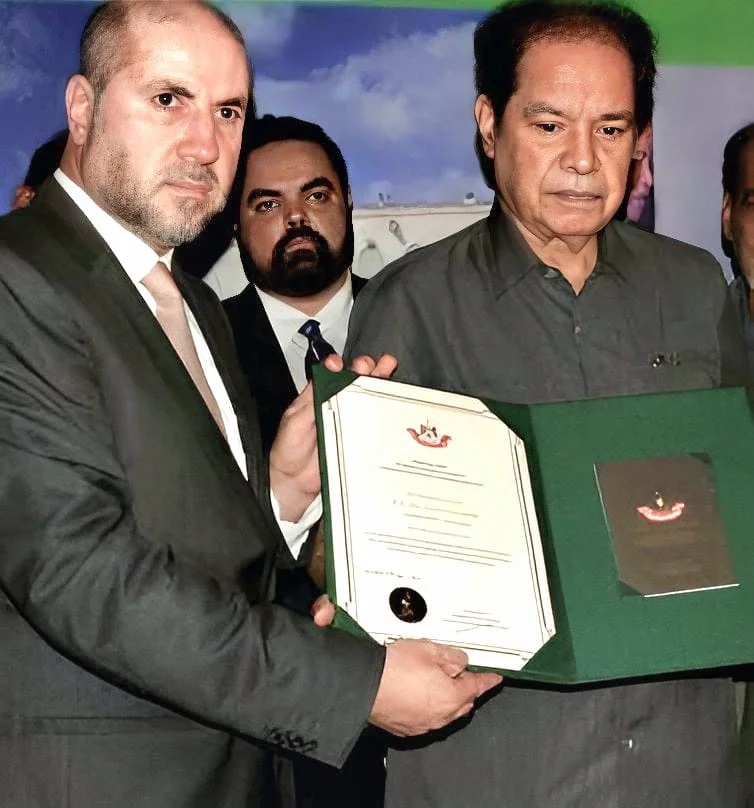
Imam ul-Mulk III His Excellency Al Sharif Vicaruddin decorated with the Order of the Star of Jerusalem (Wissam Najm al-Quds) by H.E. Palestinian President Mahmoud Abbas. The Order of the Star of Jerusalem is Palestine’s highest honor. Imam ul-Mulk IV Al Sharif Ahmed ibn Abbas Al Askari along with His Excellency Chief Justice of Shariah, State of Palestine Dr. Mahmoud Habbash are in the photo.
Royal House of Imam ud-Daula
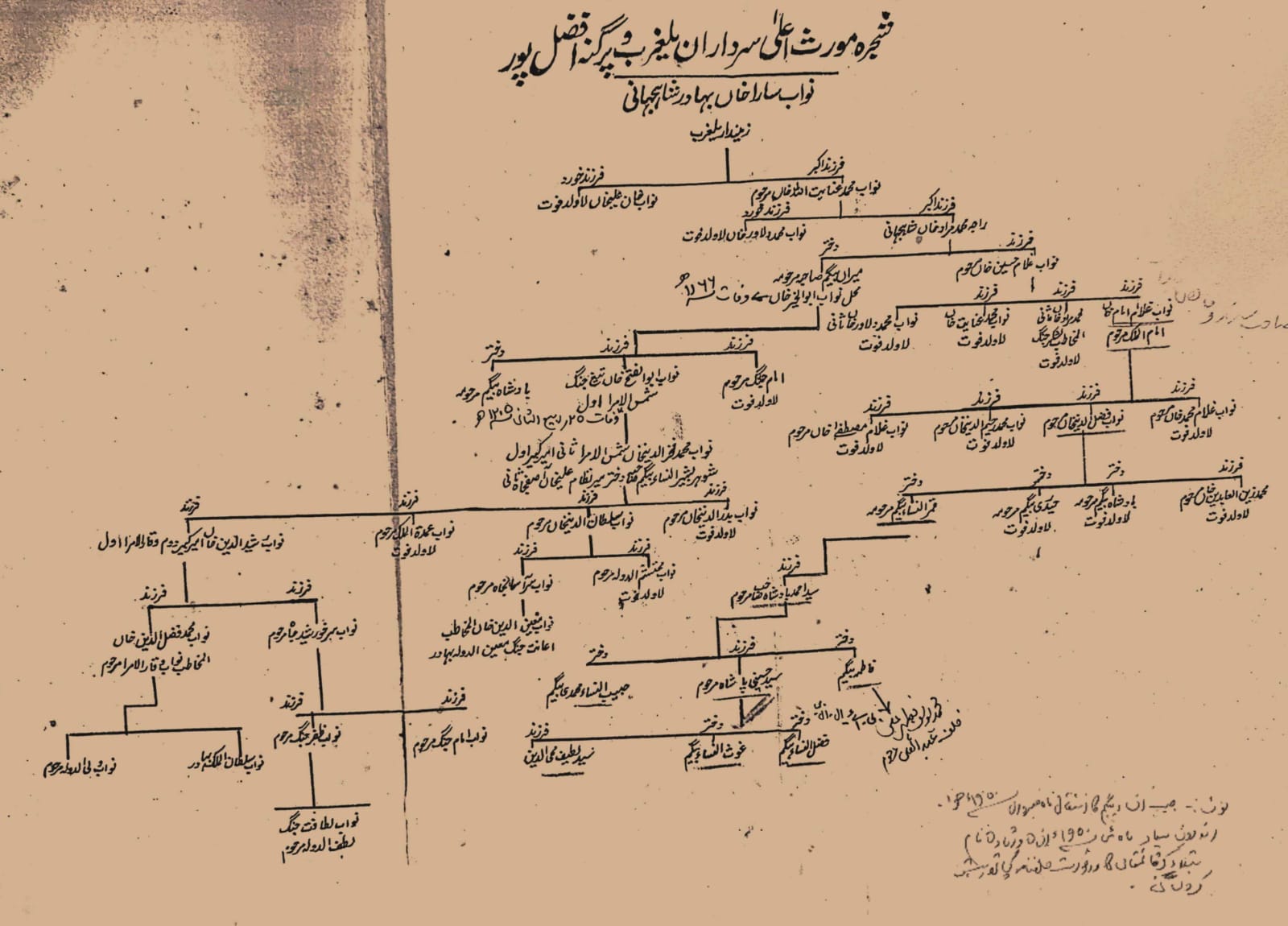
Legal heirs lineage chart of Imam ul-Mulk, Royal House of Imam ud-Daula and its relation to co-regents of Hyderabad – Royal House of Paigah tracing down to Habibunnisa Mohammedi Begum, grandmother of Imam ul-Mulk IV and a descendant of Imam ul-Mulk I. From her paternal side, Imam ul-Mulk IV’s grandmother shares ‘Abdullah al-Kamil b. Hasan al-Muthanna, his son Musa al-Jaun, his son ‘Abdullah al-Salih, and his son Musa al-Thani, as common ancestors between the Kings of Morocco, the Hashemites (monarchy), Grand Sharifs and Emirs of Mecca, Kings of Hejaz, Jordan, Syria, and Iraq, the Idrisids of Fez, Hamudites of Spain, Leaders of the Senussi Order, and the King’s of Libya (Idris I).
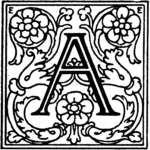
ccording to the Royal Commission, the titles Imam ul-Mulk and Imam ud-Daula were given to the House of Imam ud-Daula – the maternal side parent House of the Paigahs (Nawabs of Afzalpur) – during Asaf Jah II Arastu i-Zaman Nizam ul-Mulk Nizam ud-Daula Mir Nizam Ali Khan Bahadur, Nizam of Hyderabad’s period under the Seal of the Great Mughal Emperor Shah Alam.
Unfortunately, these details and locations of the vast estate emerged from court proceedings between the Royal House of Imam ud-Daula – who are the legal heirs of Imam ul-Mulk and the three co-regent families of Hyderabad’s Royal Houses of Paigah – Vicar ul-Umara, Khurshid Jahi, and Asman Jahi during the period of Amir e-Paigah Nawab Zaheer Yar Jung whom the heirs of Imam ul-Mulk took to court, sued and defeated.
Maternally, the parent House of the Royal Houses of Paigah was that of the Nawab of Afzalpur – Raja Muhammad Murad Khan Shahjahani. Raja Murad Khan’s son Nawab Ghulam Husayn Khan, and Miran Begum Saheba, wife of Nawab Abul Khair Khan, were biological siblings. Their son was Nawab Shams ul-Umara I Abul Fateh Khan Taigh Jung. Nawab Ghulam Husayn Khan’s son was Nawab Ghulam Imam Khan titled Imam ul-Mulk, Imam ud-Daula. Imam ul-Mulk’s lineage continued through his granddaughter Qamarunnisa Begum. Her grandson was Nawab Al Sharif Ahmed Badshah Al Hasani. His daughter was Habibunnisa Mohammedi Begum, the maternal grandmother of Al Shairf Ahmed Ibn Abbas Al Askari Al Hashemi.
Included below is the copy of the ceremony by Asaf Jah II, the Great Mughal Emperor Shah Alam’s Seal recognizing Imam ul-Mulk, and a hand written letter from the Prime Minister of Hyderabad Maharaja Sir Kishan Prasad, calling upon the Paigah Royals to honorably restore the rights of the heirs of Imam ul-Mulk without delay.
The House of Imam ud-Daula claim in court was the division of the vast imperial Shahjahani estate of the Nawab of Afzalpur Raja Muhammad Murad Khan Shahjahani son of Nawab Mohammed Inyatullah Khan that came to the family of Nawab Shams ul-Umara I Abul Fateh Khan Taigh Jung from his mother was in fact supposed to be divided into four Royal Houses, not three, the last being Imam ul-Mulk’s House of Imam ud-Daula.
In conclusion, the Royal House of Paigah was ordered by the court to accept the family tree presented by the legal heirs of Imam ul-Mulk, the Royal Commission recognized their titles, and the proceedings were finally settled by the Royal Houses of Paigah.
This case was the longest settlement of inheritance suit to be settled in Hyderabad’s entire 400 year history, lasting 170 years.
The incumbent Head of the House of Imam ud-Daula customarily titled Imam ul-Mulk IV is Al Sharif Ahmed Ibn Abbas Al Askari Al Hashemi.
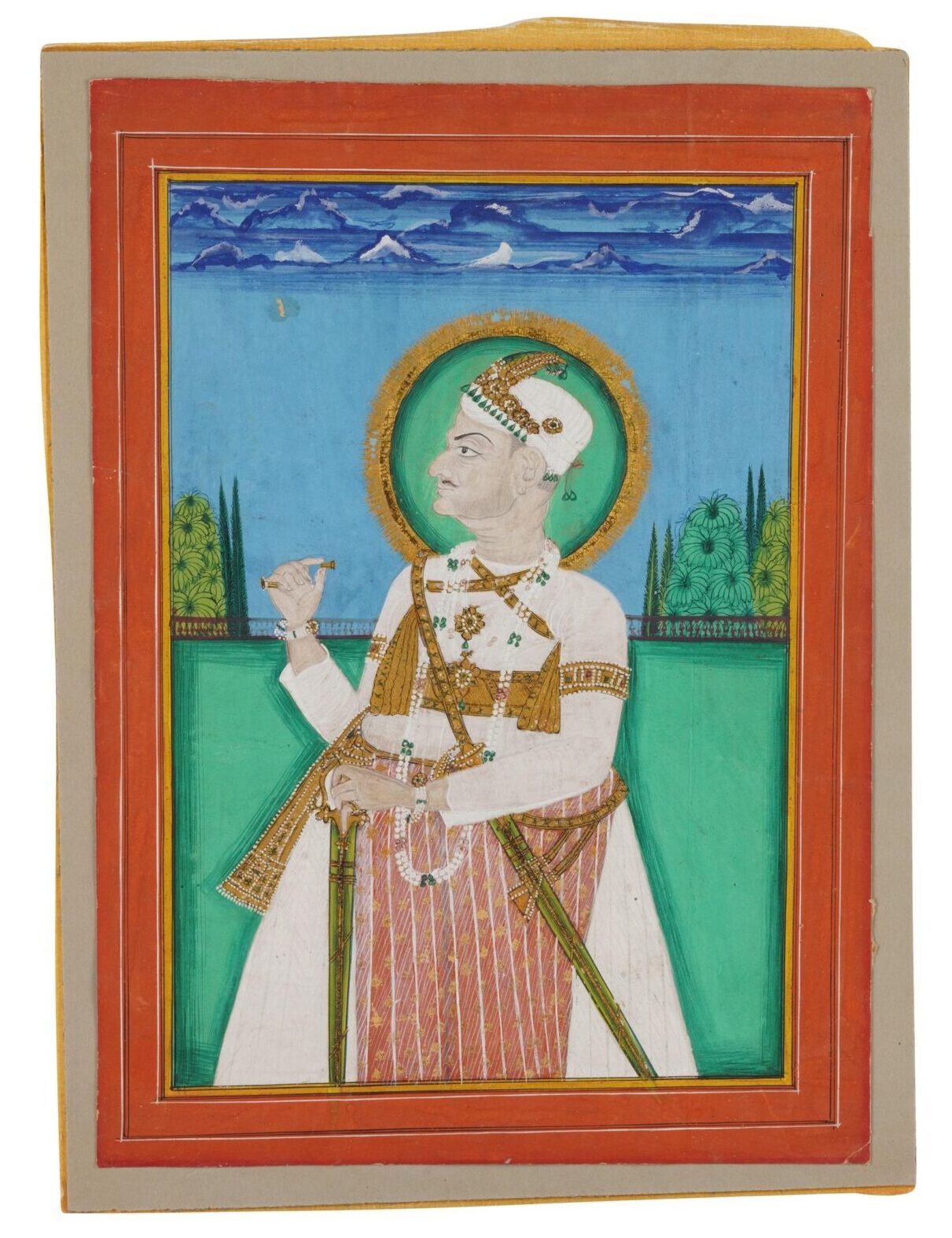
A standing portrait of Nizam Ali Khan Siddiqi, Asaf Jah II (1734 – 1803) Rajasthan, North-Western India, ca. mid-19th century
Translation: Important Decision Issued in the Case of Nawab Zaheer Yar Jung and the Heirs of Imam ul-Mulk
The Rahnuma-E-Deccan Daily 18-01-1959
The honorable court has delivered a significant decision in the case between Amir e-Paigah Asman Jahi Nawab Zaheer Yar Jung and the heirs of Imam ul-Mulk. This case revolved around disputes over inheritance rights and the ownership of vast properties and assets. The court ruled in favor of Imam ul-Mulk’s heirs, rejecting the claims made by the Nawab Zaheer Yar Jung.
The ruling established that the heirs of Imam ul-Mulk are the rightful beneficiaries of the contested properties and vast estates. The court emphasized that the distribution of assets must follow the principles of Islamic inheritance law (Sharia). It was concluded that Nawab Zaheer Yar Jung had no legal standing or valid claim over these properties, leading to the dismissal of his case.
During the proceedings, Nawab Zaheer Yar Jung had argued his claims over certain aspects of the estate, but the court found these claims unsubstantiated and without merit. In contrast, the heirs of Imam ul-Mulk successfully demonstrated their legitimate right to inherit the properties as direct descendants. This decision effectively secures their ownership of the disputed properties and resolves a long-standing legal conflict.
The verdict not only vindicates the heirs of Imam ul-Mulk but also sets a legal precedent regarding inheritance disputes in families of historical and social significance. The heirs are reported to have welcomed the decision, viewing it as justice being served after 170 years of litigation.
What the Heirs of Imam ul-Mulk Gained:
1. Victory in the Case : The court ruled decisively in favor of the heirs, affirming their legal claim over the contested properties.
2. Defeat of fringe opponents within the Royal House of Paigah represented by its last Amir Nawab Zaheer Yar Jung’s Claims : The ruling dismissed Nawab Zaheer Yar Jung’s case, nullifying his arguments and ensuring the heirs’ rights were upheld.
3. Ownership of Properties and Titles : The judgment grants the heirs complete and undisputed ownership of the contested properties and titles, recognized by the Royal Commission.
4. Adherence to Islamic Law : The court reaffirmed that the inheritance should be divided according to Islamic principles, ensuring a just and equitable distribution among all rightful heirs.
5. Resolution of Legal Disputes : The ruling brought an end to a protracted legal battle, providing clarity and closure for the heirs.
This verdict was described as a major legal and moral victory for the heirs of Imam ul-Mulk and as a rejection of unwarranted claims by Nawab Zaheer Yar Jung. It solidifies the position of Imam ul-Mulk’s descendants in managing their inherited estate and protects their legacy.
Rahbar-E-Deccan Role in Announcing the Caliphal Crown’s Transfer
Welcome!
You have come to the crown of the caliphate, a great blessing.
You have arrived at the pinnacle of fortune and prosperity, welcome!
Victory and success have accompanied you, welcome!
As the standard-bearer of prophethood, you have arrived, welcome!
The gates of the caliphate have opened again, welcome!
You have come as the solution to governance, welcome!
O light of brotherhood, you have come, welcome!
With grandeur and splendor, you have awakened the dormant world,
You have illuminated the kingdom and nation, welcome!
For the garden of aspirations, you have come as a flourishing flower, welcome!
With your arrival in Deccan, the spirit of illumination has returned,
A legacy has revived, pouring blessings upon it,
A grand sip from the timeless chalice of Usman Khan.*
The poor are now comforted,
The destitute and helpless find refuge,
Even strangers are guided to a noble path.
In this realm, a voice has risen—
The pride of Hindustan, The glory of Islam
Indeed, you are the manifestation of a divine blessing in Deccan,
*The fulfillment of the caliphal aspirations linked to Ottoman Usman Khan I.
— Rahbar-E-Deccan 1931. Wali Ahad Number.
Crown Prince Special Edition.
Al Sharif Ahmed Mohiuddin, Al Sharif Yusufuddin.
68 pages. Pg. 40. Rahbar-E-Deccan Press,
Afzal Ganj, Hyderabad
The Rahbar-E-Deccan published the world’s most comprehensive newspaper coverage in Hyderabad of the most important royal wedding in recent Muslim history, between His Exalted Highness Asaf Jah VII’s Wali Ahad, the Crown Prince of Hyderabad State – General His Highness Azam Jah, Damat Walashan Sahebzada Nawab Sir Mir Himayat Ali Khan Siddiqi Bahadur Bayaffendi and the daughter of His Imperial Majesty Caliph Abdulmejid II Her Imperial Highness Princess Durru Shehvar in Nice, France.
A 68 page special edition was published by Imam ul-Mulk IV’s maternal grandfather Al Sharif Yusufuddin, Managing Editor, The Rahbar-E-Deccan and his brother Al Sharif Ahmed Mohiuddin, Editor In Chief, The Rahbar-E-Deccan, who were tasked by His Exalted Highness Asaf Jah VII Mir Osman Ali Khan to utilize their newspaper to enable socially the transfer of the grand title of Caliph to the Asaf Jahi monarch for his successor.
Subsequently, a special edition was published and The Rahbar-E-Deccan was present at the royal wedding. The two brothers were trusted to meticulously document the wedding and the stay of the two sons of the Nizam in Paris, and report back to the people of Hyderabad.
After the death of Imam ul-Mulk II Al Sharif Lateefuddin in 1984, his brother His Excellency Al Sharif Vicaruddin was anointed Imam ul-Mulk III. In 2021, his successor Imam ul-Mulk IV Al Sharif Ahmed Ibn Abbas Al Askari was annointed as Imam ul-Mulk IV by the elders of the Royal House of Imam ud-Daula in a private ceremony, and he was passed ownership to the title of the world’s oldest Urdu daily newspaper in circulation The Rahnuma-E-Deccan Daily (formerly Rahbar-E-Deccan), established in 1921.
According to Supreme Court of India documents, the new generation of the family also became heirs to the vast estate of late Al Sharif Yusufuddin, including government registered sale deeds to immovable properties in Hyderabad’s Banjara Hills valued at Rs.15,000 Crore ($1.84 Billion USD).

The Rahbar-E-Deccan Daily in 1931 in a 68 page Wali Ahad special edition. Imam ul-Mulk IV’s maternal grandfather Al Sharif Yusufuddin, Managing Editor, The Rahbar-E-Deccan and his brother Al Sharif Ahmed Mohiuddin, Editor In Chief, The Rahbar-E-Deccan were tasked by His Exalted Highness Asaf Jah VII Mir Osman Ali Khan to utilize their newspaper to enable the transfer of the Caliphal Title to the Asaf Jahi ruler.
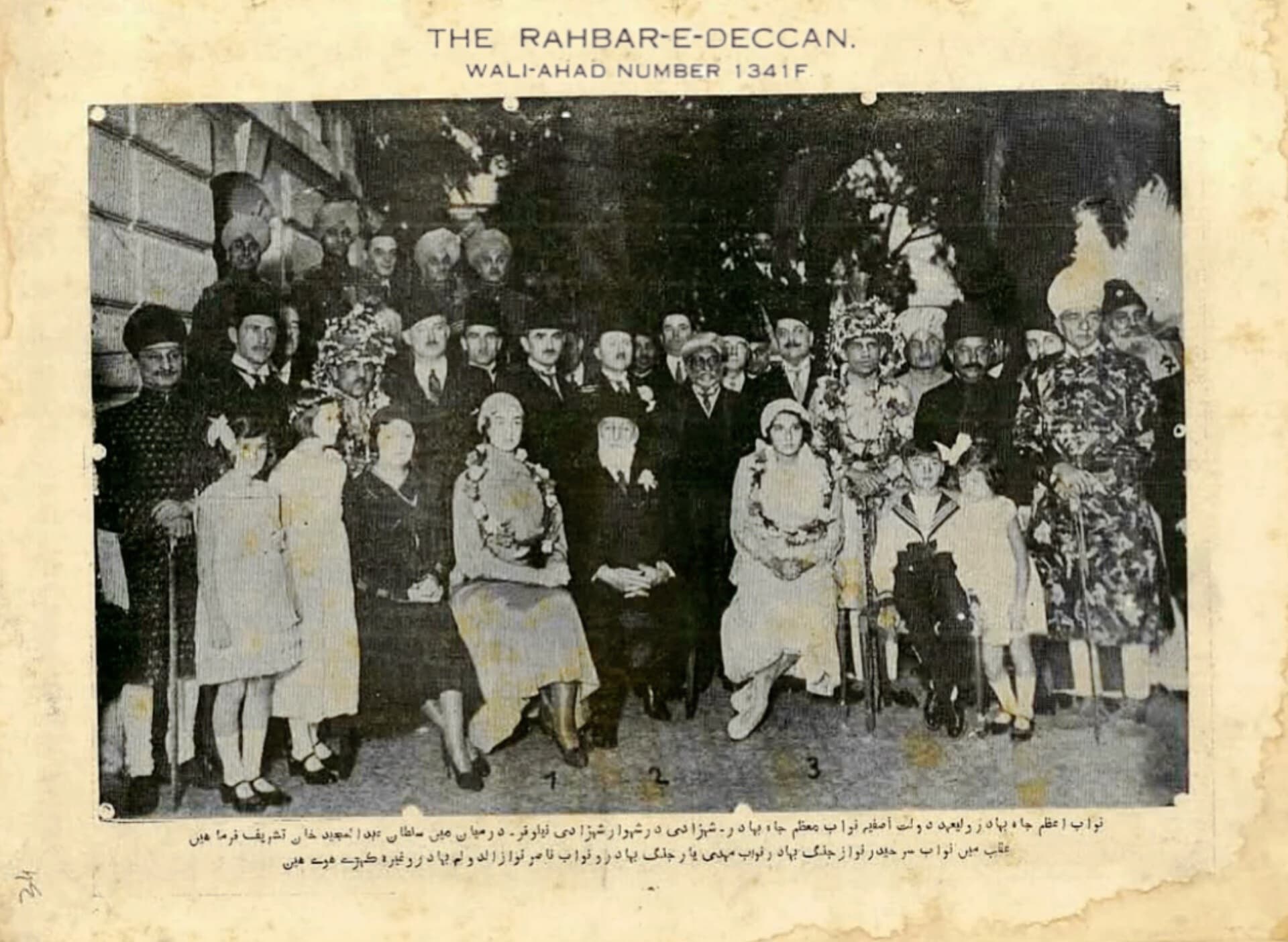
The first photo published in Hyderabad of His Majesty Caliph AbdulMejid II was published in The Rahbar-E-Deccan by Imam ul-Mulk IV’s maternal grandfathers.
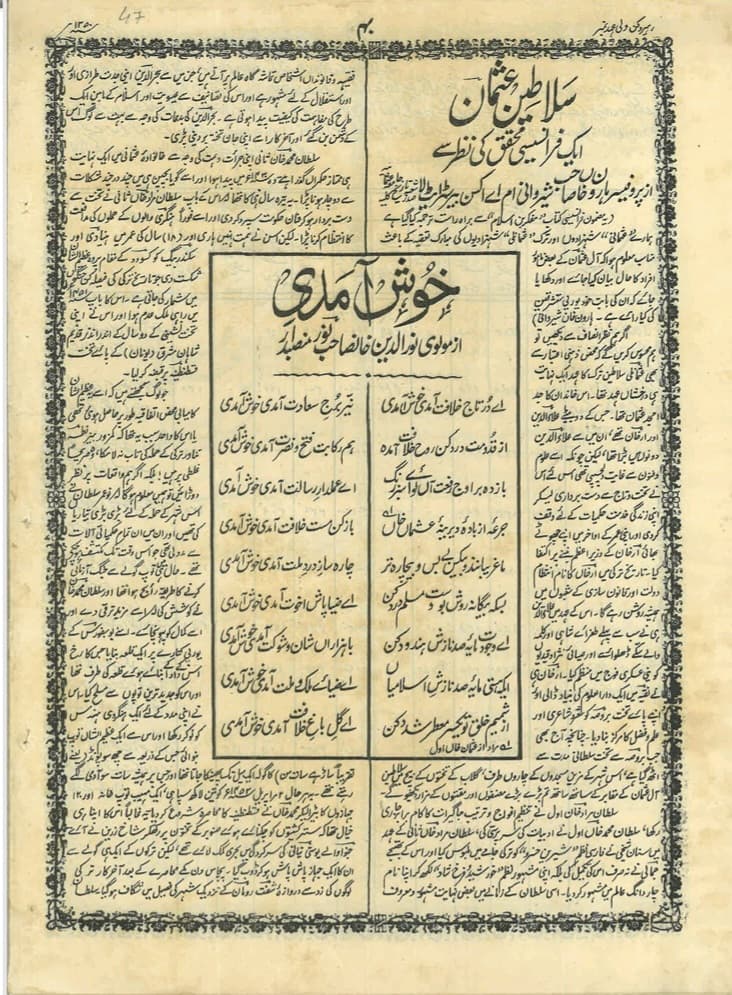
The Rahbar-E-Deccan Daily in 1931 in a 68 page Wali Ahad special edition. Imam ul-Mulk IV’s maternal grandfather Al Sharif Yusufuddin, Managing Editor, The Rahbar-E-Deccan and his brother Al Sharif Ahmed Mohiuddin, Editor In Chief, The Rahbar-E-Deccan were tasked by His Exalted Highness Asaf Jah VII Mir Osman Ali Khan to utilize their newspaper to enable the transfer of the Caliphal Title to the Asaf Jahi ruler. On page 40 a poem was published to introduce the people of Hyderabad to the transfer of the Crown of the Caliph through the marriage alliance.

Imam ul-Mulk IV’s maternal grandfathers introducing the extent of Ottoman Empire to the people of Hyderabad under instructions of His Exalted Highness Asaf Jah VII Mir Osman Ali Khan Siddiqi, grandfather of His Exalted Highness Mir Baraket Ali Khan Prince Mukarram Jah Bahadur.
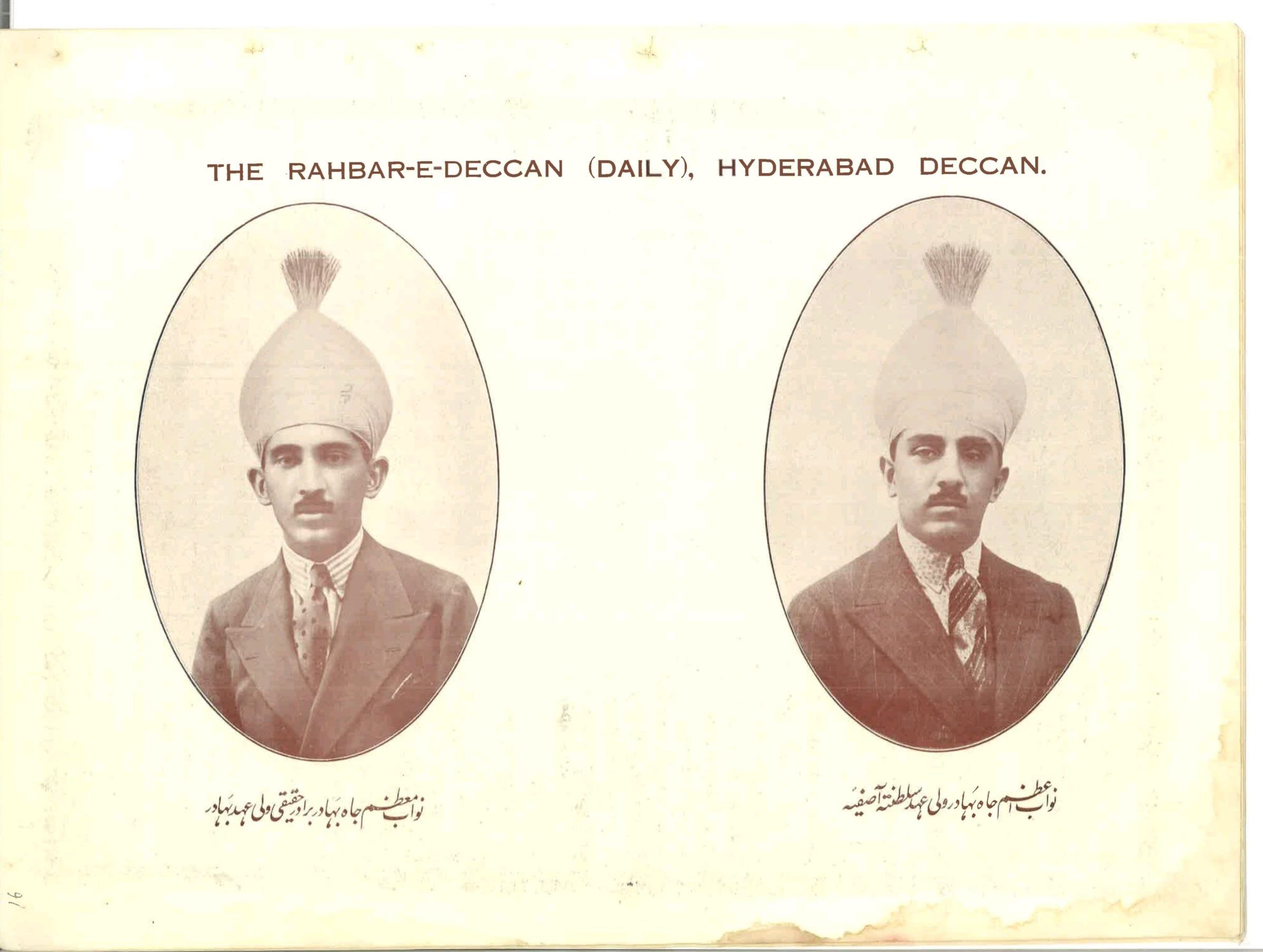
His Highness Prince Azam Jah Bahadur, Crown Prince of Hyderabad and his brother His Highness Prince Moazzam Jah in 1931 on their way to France to meet His Majesty Caliph Abdulmejid II.
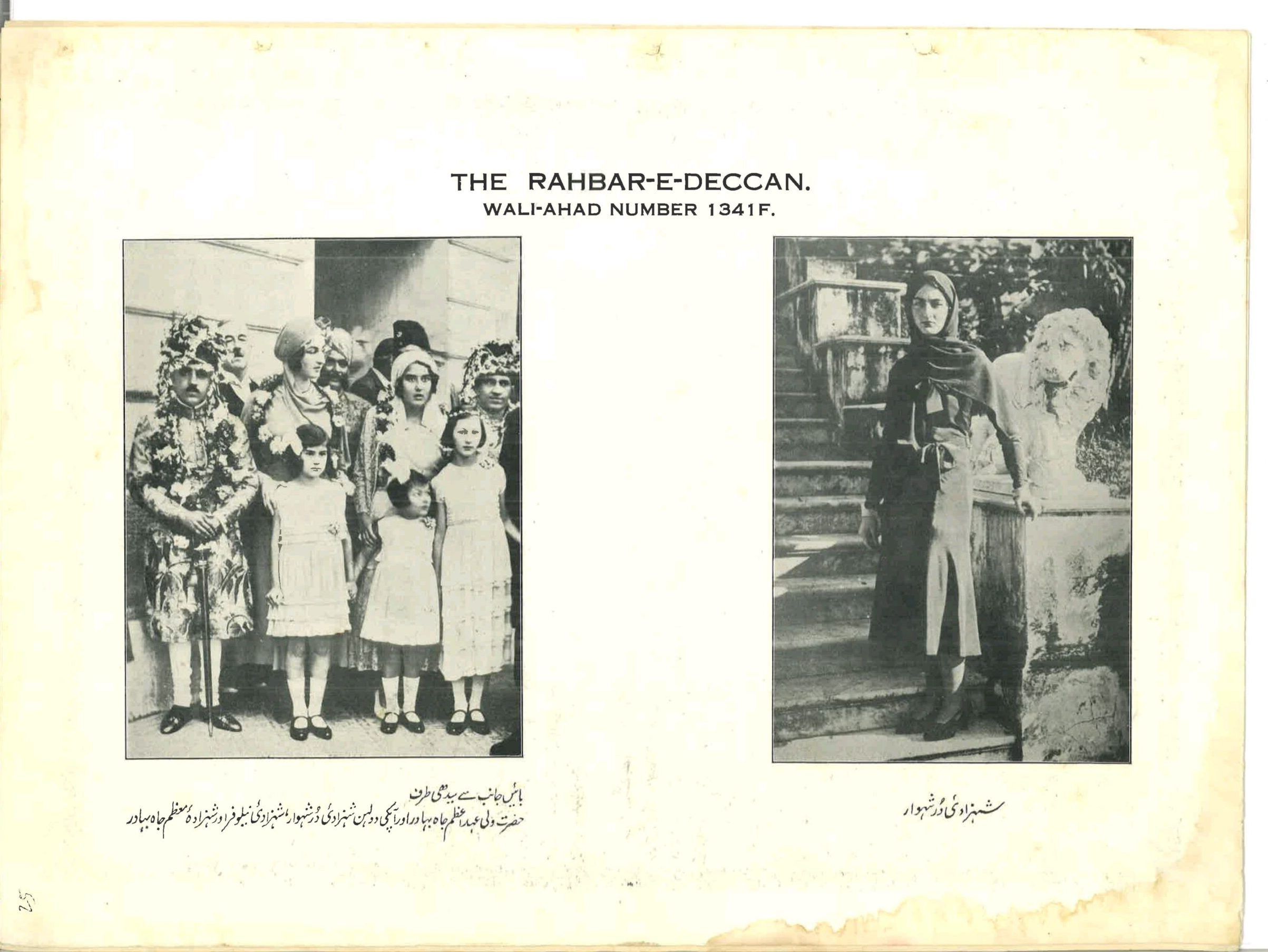
First photos in history of the new bride of Hyderabad’s Crown Prince Her Imperial Highness Princess Durru Shevar Sultan, daughter of His Majesty Caliph Abdulmejid II published in a newspaper by Rahbar-E-Deccan Daily.
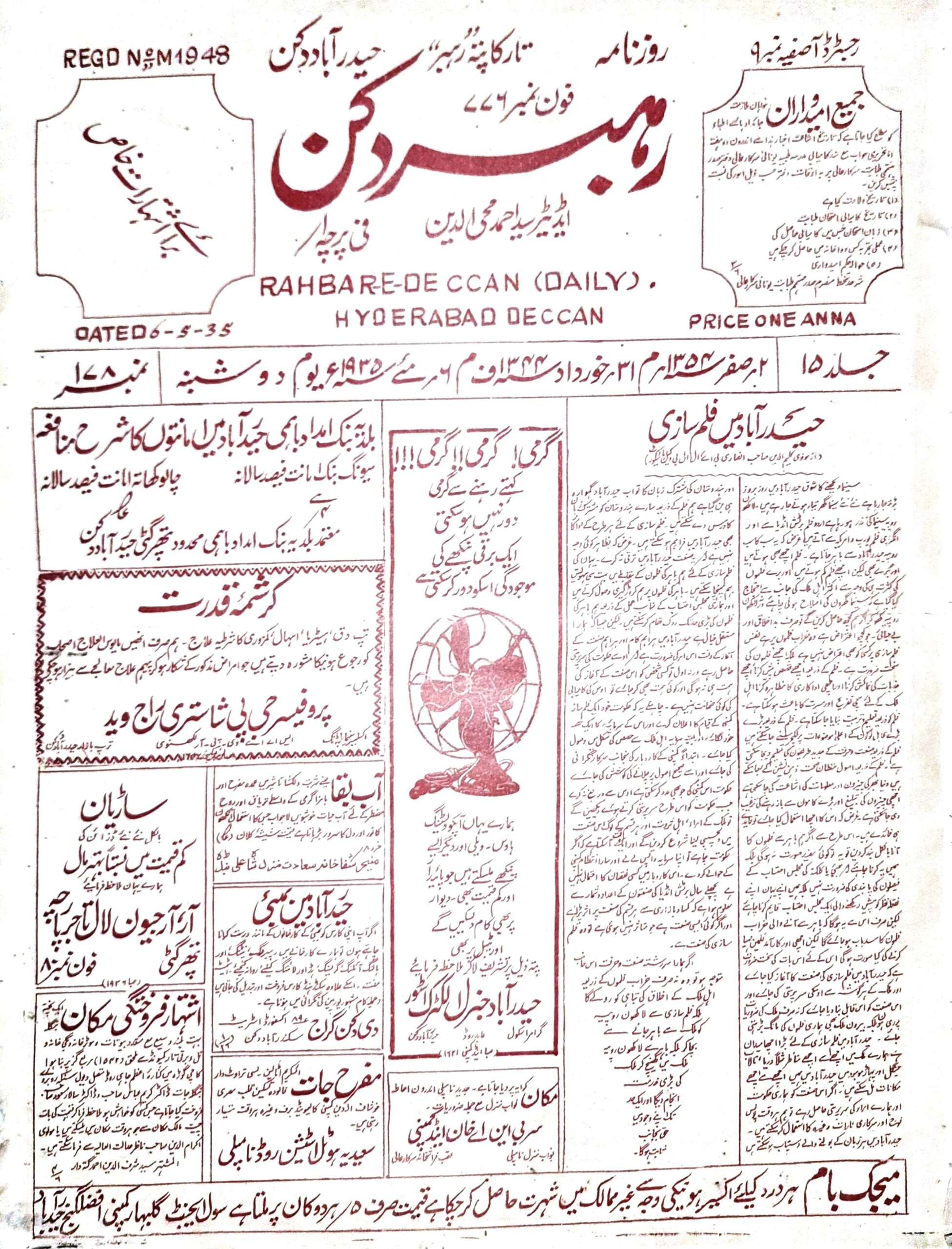
Imam ul-Mulk IV’s maternal grandfathers coverage in The Rahbar-E-Deccan Daily of ‘Ala Hazrat Malik Mo’azzam’ King George V’s Silver Jubilee in color in from 06-03-1935.
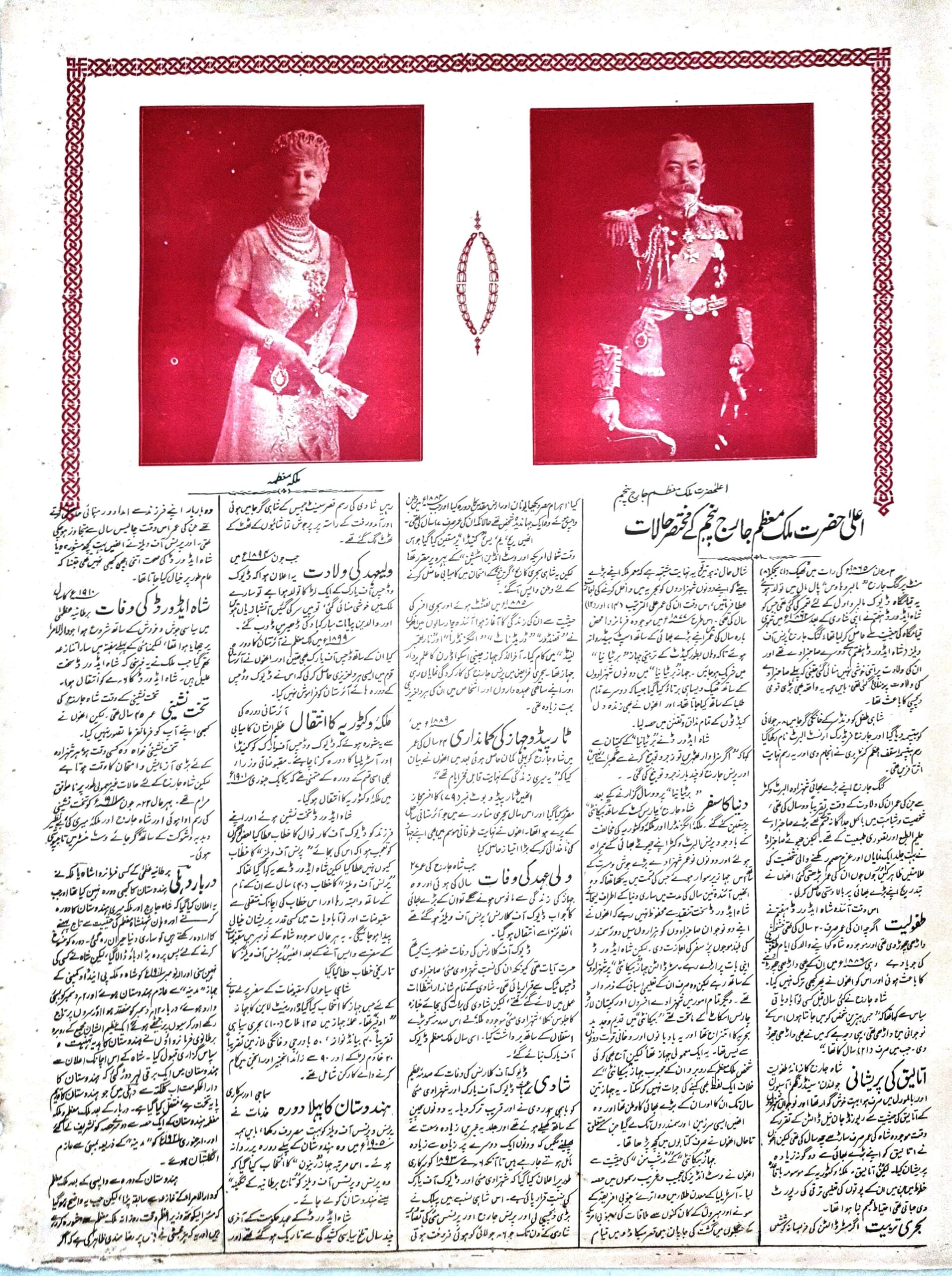
Imam ul-Mulk IV’s maternal grandfathers coverage in The Rahbar-E-Deccan Daily of ‘Ala Hazrat Malik Mo’azzam’ King George V’s Silver Jubilee in color in from 06-03-1935.
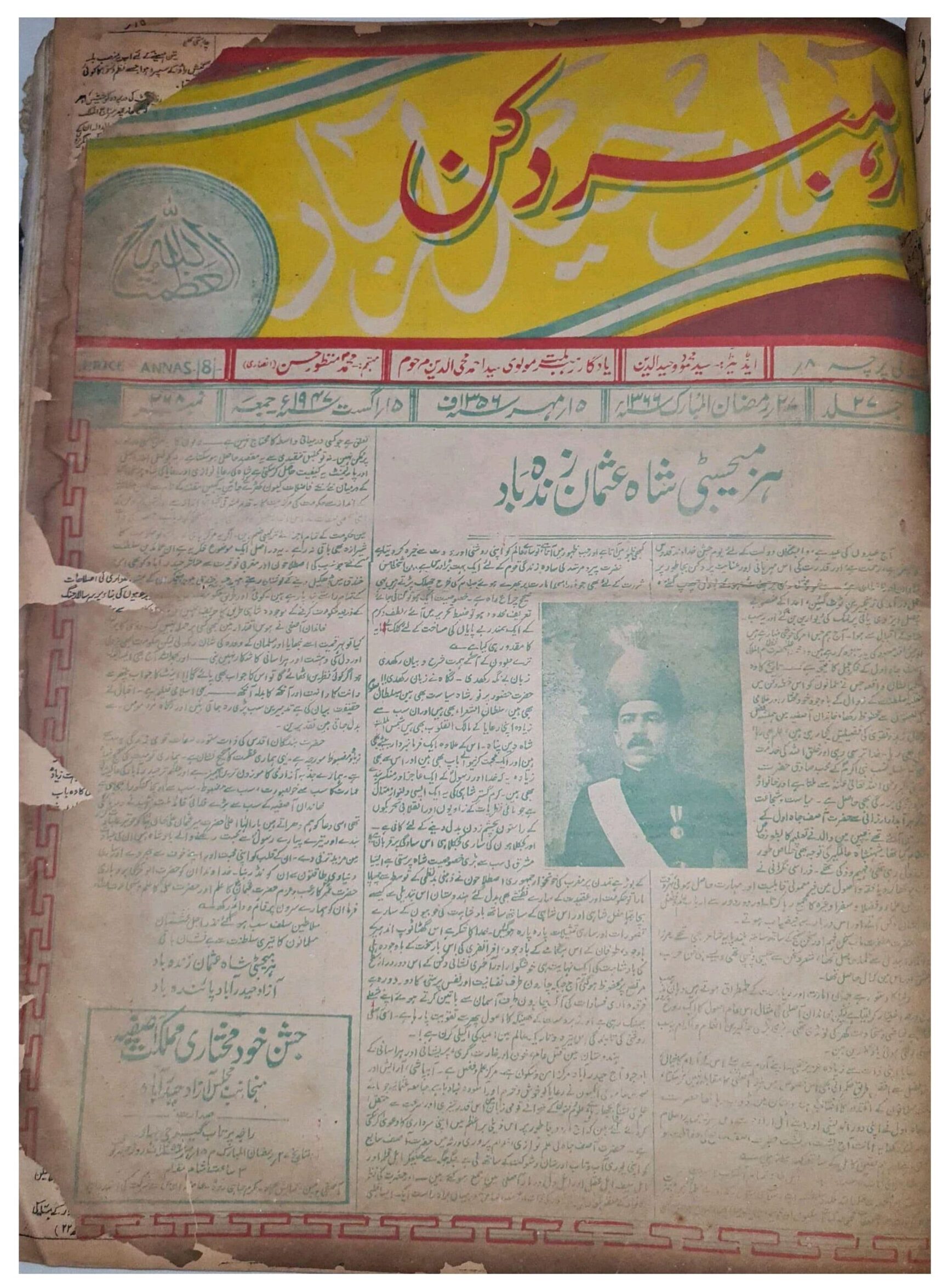
Imam ul-Mulk IV’s maternal grandfathers coverage in Rahbar-E-Deccan Daily of ‘His Majesty’ Asaf Jah VII Mir Osman Ali Khan, Nizam of Hyderabad’s proclamation of independence from the British Raj, and declaration of an independent Hyderabad in a historic tri-color publication dated 08-15-1947. In the Silver Jubilee special edition of King George V, the king was referred to as ‘Ala Hazrat Malik Mo’azzam’. Here the Nizam is referred to as ‘His Majesty’ Asaf Jah VII, Nizam of Hyderabad.

Sword of His Majesty Caliph Abdulmejid II housed at the HEH Nizam’s Museum in Hyderabad. The sword is listed as belonging to His Majesty Khalifah of Turkey.
Certificate of Authenticity of the Deed of Transfer of the Caliphal Crown to His Exalted Highness Asaf Jah VII Mir Osman Ali Khan, Nizam of Hyderabad from His Majesty Caliph Abdulmejid II for His Exalted Highness Asaf Jah VIII Prince Mukarram Jah Bahadur by Ahmed Ali Khan, M.A, P.G Dip. Museology & Conservation, Curator of Arabic Manuscripts, Salar Jung Museum – India’s Foremost Expert on Islamic Manuscripts
Upon discovering the Caliphal Deed, and other documents Imam ul-Mulk IV approached Ahmed Ali Khan, Curator of Arabic, Persian, Urdu and Islamic manuscripts of Salar Jung Museum. It was Ahmed Ali Khan who confirmed and verified the documents for Imam ul-Mulk IV.
Ahmed Ali Khan, born on June 20, 1957, in Hyderabad, is recognized as one of the most eminent experts on Islamic manuscripts in India. His father served the Salar Jung Museum with distinction from 1951 to 1974 as its first draftsman. He established the Display and Photography sections, and his son, Ahmed Ali, followed in his footsteps, beginning his temporary appointment in the Photography Section in 1975 after his father’s passing.
Educated at Osmania University with a Master of Arts degree and training in Museology, Ahmed Ali Khan furthered his expertise with courses in conservation and miniature painting at Charles Wallace, Odisha Art Conservation Centre, and Banaras Hindu University. His knowledge and dedication have significantly benefited not only the Salar Jung Museum but also other museums and institutions across the country. Over his 42-year tenure, he has become a cornerstone of the museum, eventually retiring as Curator of Manuscripts, a position he earned through relentless effort and devotion.
He authored 27 books in English and Urdu on history, fine arts, antiquities, and manuscript conservation. He compiled 21 catalogs of the museum’s manuscripts and antiquities, presented 80 research papers at international and national seminars, and was invited as an expert to 74 workshops. His scholarly contributions have been published in 80 national and international journals.
His expertise in Museology led to his involvement with advisory boards of several institutions, including the Indian Medical Herbarium Museum, Sangareddy Jail Museum, and the Centre for Urdu Language, Literature, and Culture. Ahmed Ali was also invited by governments of countries like Turkey, Iraq, UAE, Oman, Kuwait, Saudi Arabia, Nepal, and Bhutan to share his knowledge.
The Ministry of Health, Government of India, appointed him as an Expert in Museum Planning for the AYUSH department, where he was the sole committee member who presented a comprehensive report to the government. His outstanding services have been recognized by the Governor of the state, Narayan Dutt Tiwari, and the last Chief Minister of the united Andhra Pradesh, Dr. Kiran Kumar Reddy.
Ahmed Ali’s contributions extend beyond the Salar Jung Museum. He has been instrumental in establishing, renovating, and preserving 15 museums across India. These include the Dr. Hankin Police Museum and Discovery Centre, Andhra Pradesh Police Academy, Hyderabad; Mini Jail Museum, Chanchalguda; Sangareddy Jail Museum, Medak; Centre for Urdu Language, Literature, and Culture, Maulana Azad National Urdu University, Hyderabad; and the Craft Museum at Shilparamam, Tirupati.
Ahmed Ali’s services have also been sought for projects like the Hall of Fame (Military Museum) in Leh, Ladakh, the Vision of Osmania at Osmania University, Hyderabad, the renovation of the Tirumala Tirupati Devasthanams museums, and the B.R. Ambedkar Memorial Museum in Pune. He planned the Indian Medical Herbarium Museum, the Ramakrishna Math Museum and Library in Visakhapatnam, and the Mohammad Ali Khan Art Gallery in Tonk, Rajasthan, among others.
His contributions to the Salar Jung Museum are extensive. He modernized the museum building, redesigned the Jade Gallery, and renovated the 435-year-old Ashurkhana at the Salar Jung Cemetery. He organized 122 exhibitions on various religions, themes, and subjects across India and internationally. He also led 22 international and national seminars and carried out the complete photography of all the museum’s manuscripts and artifacts, creating archives of 48,000 images.
In addition to his curatorial work, Ahmed Ali has made significant contributions to the welfare of museum staff. He secured land for staff colonies, established literacy classes for uneducated employees, and provided computer training for the educated staff. He distributed educational kits to the children of employees and organized annual awards for students. He facilitated loans for the financial stability of employees’ families and established a cooperative canteen that offered educational loans, marriage gifts, and retirement benefits.
Ahmed Ali introduced modern storage systems in the Manuscripts and Publications Departments of the museum, digitizing 15,000 manuscripts and publications in Arabic, Persian, and Urdu. He renovated these departments according to international library standards and preserved 95 rare publications using modern scientific method.


